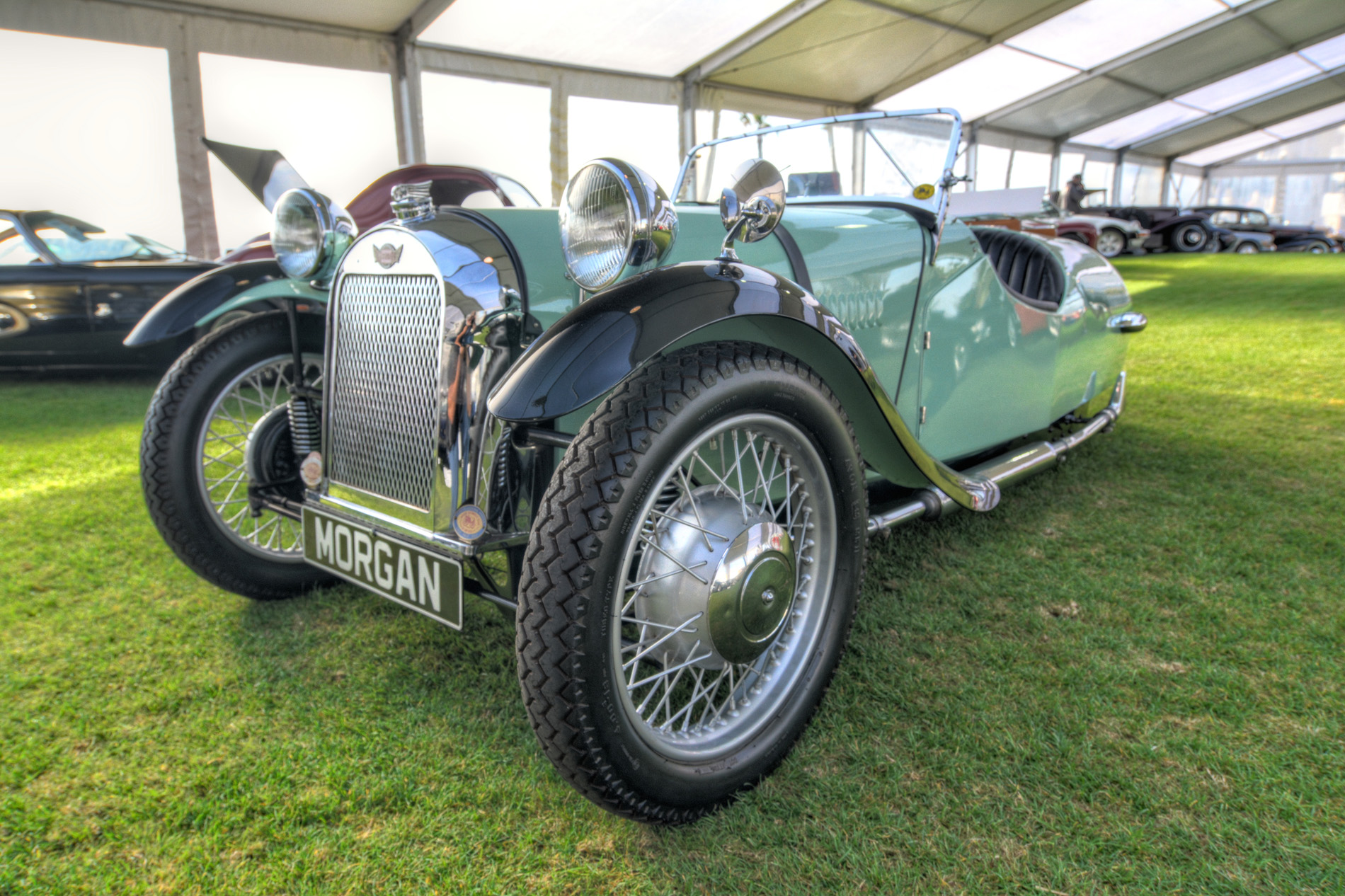
The 1947 Morgan F-Super had a 30 bhp, 1,172 cc L-head inline four-cylinder engine, three-speed manual transmission, coil spring independent front suspension, longitudinal leaf spring rear suspension, and three-wheel drum brakes. It is a unique and historically significant vehicle in the history of Morgan Motor Company. Known for its lightweight design, agile handling, and distinctive three-wheeled configuration, the F-Super holds a special place in automotive history.
Design and Features
- Manufacturer: Morgan Motor Company, a British manufacturer renowned for its hand-crafted sports cars and distinctive three-wheeler models.
- Body Style: The F-Super is a three-wheeler with a two-seat open-top roadster design, characterized by its distinctive lightweight and minimalist construction.
- Chassis: Features a steel ladder frame, providing a sturdy and flexible base for the lightweight body.
- Bodywork: The body panels are made of aluminum, mounted on a wooden frame, which is a hallmark of Morgan's construction techniques. The design emphasizes simplicity and functionality, with exposed wheels and minimal body overhangs.
- Interior: Spartan and functional, the interior includes basic instrumentation, leather seats, and essential controls, reflecting its focus on lightweight performance.
Performance
- Engine: Powered by a Ford 10 Model C inline-4 engine, a popular and reliable choice for many British cars of the era.
- Power Output: Approximately 36 horsepower, which is modest by modern standards but sufficient given the vehicle’s lightweight construction.
- Transmission: Equipped with a 3-speed manual gearbox, providing adequate performance and reliability.
- Top Speed: Capable of reaching speeds around 70 mph (113 km/h), which was respectable for a three-wheeler of its time.
- Suspension: Features independent front suspension with sliding pillar design, which was innovative and contributed to its nimble handling. The rear uses a conventional live axle with leaf springs.
- Brakes: Mechanical drum brakes on all three wheels, which were standard for the period.
Historical Significance and Legacy
- Post-War Production: The F-Super was produced in the post-World War II era, a time when Morgan resumed production with limited resources and focused on practical, economical vehicles.
- Evolution: The F-Super evolved from Morgan's earlier three-wheeler models, combining the simplicity of the original designs with more powerful engines and improved handling characteristics.
- Unique Configuration: The three-wheeled design, with two wheels at the front and one at the rear, gave the F-Super unique handling dynamics and a distinctive appearance that set it apart from four-wheeled vehicles.
Production and Rarity
- Production Years: The F-Super was produced primarily in the late 1940s and early 1950s.
- Total Units Produced: Production numbers were relatively low, contributing to its rarity and collectibility today.
- Collectibility: Due to its unique design, historical significance, and limited production, the F-Super is a sought-after collector's item, cherished by enthusiasts of vintage and classic cars.
Notable Features
- Lightweight Construction: The use of aluminum body panels and a simple, robust chassis made the F-Super lightweight and agile.
- Innovative Suspension: Morgan's sliding pillar front suspension provided excellent handling and comfort compared to contemporary designs.
- Distinctive Appearance: The three-wheeler configuration and minimalist body design gave the F-Super a unique and timeless look.
You may purchase a print of the 1947 Morgan F-Super in our dElegance 2017 online gallery.
The Vintage Automobile Article Index

